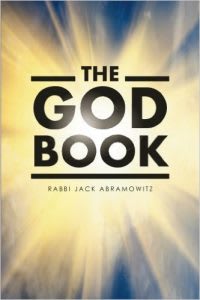24. The Interpretation of Prophetic Allegories
Prophets would sometimes receive their prophecies in the form of allegories. In such a case, they would be shown or told the allegory, followed by its meaning. [II, 43] In dreams, it is possible for a person to believe that he is awake. In his dream, he can even relate a dream to another person, who then interprets it - all within the actual dream! This sometimes happened with prophets. Daniel, for example, had a vision in a dream (Daniel 7:1), it perturbed with that he did not understand it (verse 15) and an angel interpreted it for him (verse 16). The vision, Daniel's frustration and the interpretation all occurred within the dream.
Other times, the prophet might see an allegory in a dream but he would not receive the interpretation until after he awoke. The Rambam tells us that this was the case with Zechariah, who had a vision of two rods (Zechariah chapter 11).
The prophets saw a variety of things allegorically: Jeremiah saw a bubbling pot (Jer. 1:13); Ezekiel saw a scroll (Ezek. 2:9); Amos saw a plumbline (Amos 7:7), etc. These things had particular symbolic meaning. (The pot faced north, from where trouble would come; the scroll was full of mourning and lamentations; the plumbline represents God measuring the righteousness of His people.)
Other things they saw, however, relied upon word play to convey their meaning. In such a case, the prophet's capacity for imagination was called upon to grasp the double meaning of the vision. Some examples include:
* Jeremiah saw an almond branch - makeil shakeid in Hebrew (Jer. 1:11). This is because God was hastening (shokeid) to fulfill His word (verse 12);
* Amos saw a basket of summer fruit - k'luv kayitz in Hebrew (Amos 8:2). This symbolized the end (hakeitz) that was coming (ibid.).
These prophecies rely upon the linguistic similarities of shakeid to shokeid and of kayitz to keitz, not on any inherent symbolic meaning of the branch or the fruit.
So, allegories could have a symbolic meaning as in the case of the pot or the scroll, or they could have a linguistic meaning as is the case with the branch and the fruit. But there is a third way that prophetic allegories are explained that is even more esoteric: through the transposition of letters.
The Rambam gives the example of Zechariah's two rods (Zechariah chapter 11). One of these rods was called noam, meaning pleasant - a reference to Israel's early days, when they performed God's will. The other rod was called choveilim, meaning destruction - a reference to Israel's later days, when they rebelled against God. But the word choveilim has a second shade of meaning: it also means that Israel despised God (see verse 8). The word to despise, however, does not have the Hebrew root Ches-Beis-Lamed. Rather, it has the root Beis-Ches-Lamed. The prophet understands the transposition of letters necessary to reveal additional shades of meaning in his visions.
It is this third method of explanation, the Rambam tells us, that is the key to unlocking many secrets in Ezekiel's vision of God's "chariot" in Ezekiel chapter 1.

